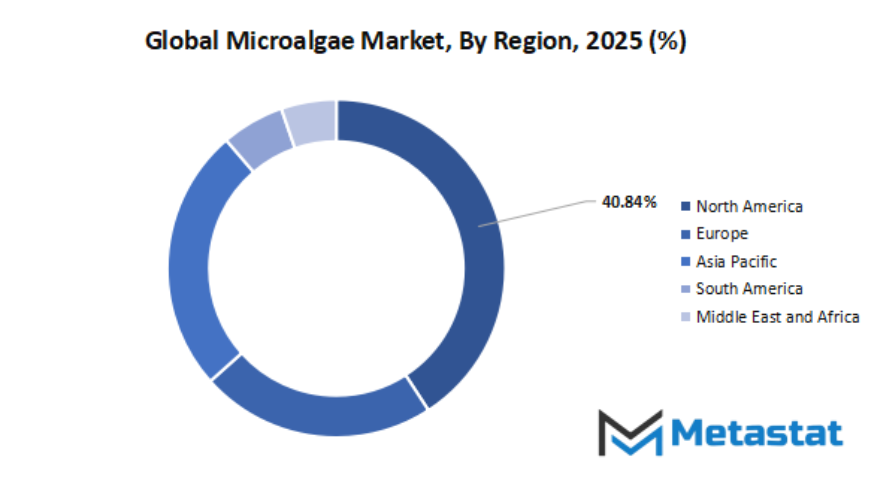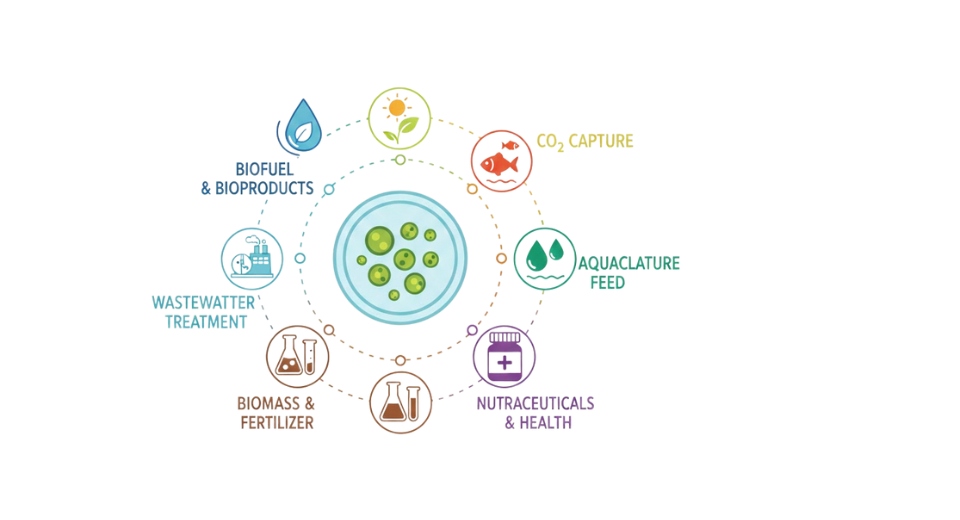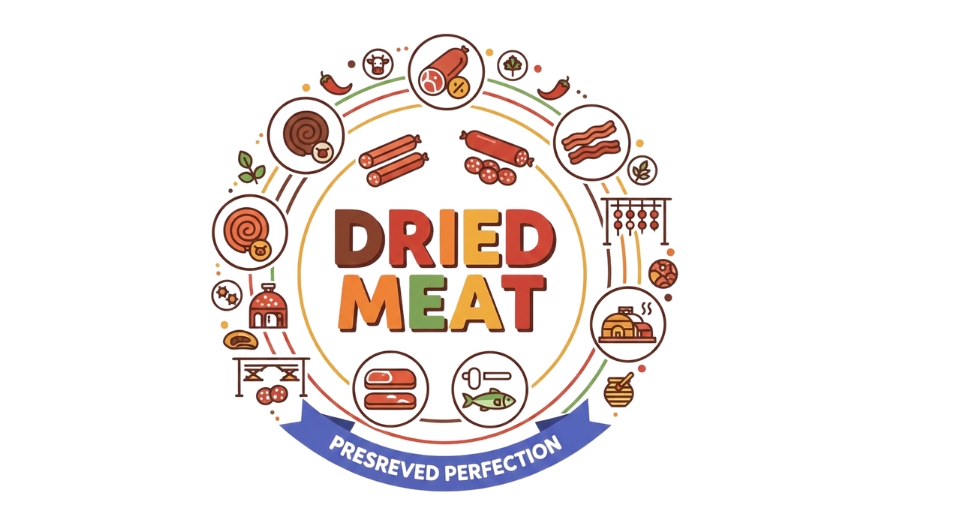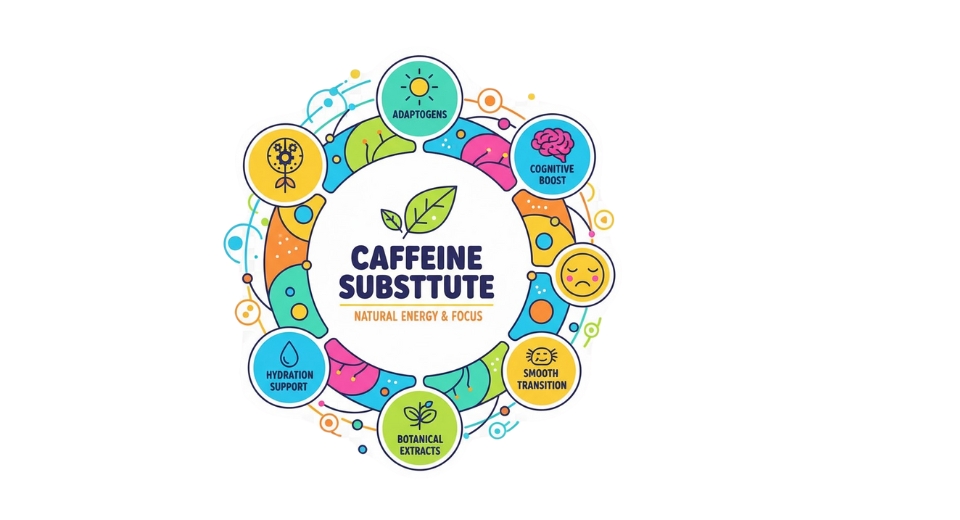Global Microalgae Market - Comprehensive Data-Driven Market Analysis & Strategic Outlook
- The Global Microalgae market valued at approximately USD 13.7 Billion in 2025, growing at a CAGR of around 8.8% through 2032, with potential to exceed USD 24.7 Billion.
- Marine Water account for a market share of 51.1% in 2024, driving innovation and expanding applications through intense research.
- Key trends driving growth: Rising demand for protein-rich, plant-based nutrition and super-food ingredients derived from micro-algae., Growing interest in biofuels and carbon capture technologies using micro-algae cultivation.
- Opportunities include: Growing opportunities in specialty functional ingredients (omega-3, pigments) and wastewater-based cultivation for circular economy models.
- Key insight: The market is set to grow exponentially in value over the next decade, highlighting significant growth opportunities.

Market Background & Overview
The Global Microalgae Market will continue to shape an industry that looks to small, yet incredibly capable, organisms to inspire new possibilities for production, sustainability, and innovation. As interest in alternative resources increases, microalgae will not only be explored as a source of nourishment or supplements but more so as the foundational building blocks for ideas that will stretch beyond conventional boundaries. Companies and researchers alike will be looking at microalgae through wider lenses, treating it as a material that will affect many directions rather than fit into one single expectation. This approach will allow the industry to move toward solutions that feel more adaptable, efficient, and creatively engineered.
In the following years, research on microalgae will be conducted for characteristics that even those who currently work with it may not have fathomed. Its flexibility will inspire experiments in various industries that look toward cleaner ways, smarter product development, and techniques that lessen demand on traditional resources. This will not occur just within laboratories, but its practical applications will appear in everything from nutrition to cosmetics to environmental systems and even energy-related endeavors. As these concepts evolve, so, too, will the concept of microalgae take a clearer identity when one considers how this microscopic organism will impact larger discussions on sustainable development.
Market Segmentation Analysis
The global Microalgae market is mainly classified based on Source, Species Type, End Use.
By Source is further segmented into:
- Marine Water
The growth linked to marine water will shape how production methods adapt to rising demand within the Global Microalgae Market. Future supply networks will draw strength from ocean-based cultivation that supports wider nutrient availability, allowing manufacturers to create steady outputs to support long-term industrial interest without stressing limited land-based systems.
- Fresh Water
Freshwater cultivation will shift the Global Microalgae Market into a production structure with controlled and predictable output cycles. Regulated environments that support cleaner harvesting methods are the bases on which future operations will be dependent, helping the producer maintain consistent quality levels while reducing ecological pressure. This will guide industries looking for reliable inputs for value applications.
By Species Type the market is divided into:
- Spirulina
With expanding programs related to nutrition and well-being, spirulina will maintain a strong function in shaping the Global Microalgae Market. Future manufacturing techniques will strain more advantageous purity and centered cultivation strategies, enabling its wider integration into foods, dietary supplements, and studies projects looking for naturally sourced purposeful ingredients.
- Chlorella
With the rising call for for nutrient-wealthy inputs throughout special industries, Chlorella will continue to bolster its position inside the Global Microalgae Market. The future potentialities on this marketplace will be associated with superior cultivation structures with higher yield efficiency, permitting groups to steady stable components for components corporations that price plant-based compounds and sustainable sourcing.
- Dunaliella
The growth in relevance of Dunaliella for colourant and wellness applications will guide future interest in the Global Microalgae Market. Indeed, controlled production conditions will support improved extraction processes in order for industries to make use of consistent pigment concentrations while exploring new uses aligned with the development of natural products.
- Haematococcus
Haematococcus will play a role in the future direction of the market, especially as more interest develops in naturally derived antioxidants. Innovations in harvesting will further help industries that wish to use powerful bioactive compounds in areas where purity, stability, and sustainability have strong commercial value in the Global Microalgae Market.
- Crypthecodinium
Crypthecodinium will support future expansion within the Global Microalgae Market through its potential in nutrition-focused applications. Advanced growth systems that promote steady production will allow market participants to better extract the higher-value, specialized nutrients their industries develop into the next generation of formulations.
- Schizochytrium
Schizochytrium is gaining a surge of interest due to the rise in demand for plant-based alternatives. Future cultivation solutions will be developed to provide consistent volumes that industries need, which consider sustainable sources for the supply of essential compounds and will help manufacturers meet rising expectations for traceable, ethical ingredients.
- Euglena
Euglena will lead future developments in the Global Microalgae Market, as industries look for flexible biological materials. Production systems will incorporate technologies that preserve purity and stability of growth, with wider experimentation across segments using versatile components for a range of new product lines.
- Nannochloropsis
The potential of Nannochloropsis in nutrient-rich preparations will drive long-term growth in the Global Microalgae Market. Upgrades in the future to research and cultivation will definitely increase output reliability, enabling market players to leverage expanded applications across various industries that require concentrated natural compounds.
- Phaedactylum
In the process, Phaedactylum will open up new avenues in the Global Microalgae Market as its unique profile is explored in several industries. Developments are further aimed at refining the extraction and cultivation techniques that can eventually allow manufacturers to add value from the specialized properties suitable for advanced formulation.
- Others
Other species will create niche developments in the Global Microalgae Market, which would help industries in the research of uncommon attributes leading to innovative applications. Growing future research activity will expand knowledge about the lesser-used variants, thus encouraging manufacturers to identify fresh commercial pathways that strengthen market diversity.
By End Use the market is further divided into:
- Food and Beverages Sector
The food and beverages segment is going to drive the Global Microalgae Market due to future demand for nutrient-focused ingredients. Manufacturers will focus on delivering stability in quality, with safe processing techniques that help natural formulations, enabling producers to answer the burgeoning interest in plant-based enhancements.
- Health and Medical Sector
The health and medical sector are going to drive interest in bioactive compounds, hence shaping future directions for the Global Microalgae Market. Advances in controlled cultivation and extraction will allow improved purity, hence supporting the industries that develop solutions relying on naturally sourced functional components.
- Animal Feed Sector
The animal feed quarter will guide the marketplace expansion because the Global Microalgae Market movements towards sustainable protein alternatives. Future adoption will rely on huge-scale manufacturing performance, enabling cost-powerful integration into feed systems seeking better dietary price without counting on aid-heavy substances.
- Pet Food Industry
The nutrient-rich addition will open up new opportunities inside the puppy food zone within the Global Microalgae Market. Producers will emphasize strong and safe cultivation procedures that are compatible with consistent aspect exceptional, similarly encouraging wider adoption within top rate formulations for companion animals.
- Personal Care and Cosmetics Sector
The cosmetics and private care enterprise will force future growth within the Global Microalgae Market by means of adopting certainly sourced additives. Improving tiers of extraction purity and formulation balance will allow groups to increasingly use microalgae-primarily based elements in merchandise geared toward pores and skin well-being and environmental cognizance.
- Fertilizers Sector
The fertilizer industry will set the long-term route for the Global Microalgae Market through research into herbal growth-selling substances. Future production frameworks will inspire green biomass use, allowing agricultural practices to exchange to alternatives that support soil fitness and sustainable farming techniques.
|
Forecast Period |
2025-2032 |
|
Market Size in 2025 |
$13.7 Billion |
|
Market Size by 2032 |
$24.7 Billion |
|
Growth Rate from 2025 to 2032 |
8.8% |
|
Base Year |
2024 |
|
Regions Covered |
North America, Europe, Asia-Pacific, South America, Middle East & Africa |
By Region:
- Based on geography, the global Microalgae market is divided into North America, Europe, Asia-Pacific, South America, and the Middle East & Africa.
- North America is further divided into the U.S., Canada, and Mexico, whereas Europe consists of the UK, Germany, France, Italy, and the Rest of Europe.
- Asia-Pacific is segmented into India, China, Japan, South Korea, and the Rest of Asia-Pacific.
- The South America region includes Brazil, Argentina, and the Rest of South America, while the Middle East & Africa is categorized into GCC Countries, Egypt, South Africa, and the Rest of the Middle East & Africa.

Market Dynamics
Growth Drivers:
The demand is developing for protein-rich, plant-based nutrients and first rate-meals components derived from micro-algae.
The rising demand for protein-rich, plant-based nutrition and amazing-food ingredients derived from micro-algae will pressure new product development in food, beverages, and nutraceuticals. Increasing consumer consciousness, purifier diets, and interest in sustainable nutrients will make manner for innovative micro-algae formulations that promise lengthy-time period marketplace boom with persevered enhancements in production performance.
Growth in hobby in bio-fuels and carbon seize technologies via micro-algae cultivation.
Increasing interest in biofuels and carbon-capture technologies that utilize micro-algae cultivation will make contributions to accelerating the low-carbon business trajectory. Research groups and generation builders will further develop the refinement of a cultivation platform that transforms micro-algae into alternative gasoline feedstock and into natural carbon-absorbing systems, offering cleanser methods for emissions reduction even as establishing possibilities for large-scale business use.
Restraints & Challenges:
High capital and operational costs related to huge-scale manufacturing and harvesting structures.
The adoption by using new entrants might be restrained because of excessive capital and operational fees related to large-scale manufacturing and harvesting systems. Infrastructure improvement, power wishes, funding in the photobioreactor, and method optimization require big price range, and the industry members will goal to lessen the financial burden by considering phased enlargement fashions, shared facilities, and partnerships.
Challenges in pressure selection, contamination manipulate, and consistent biomass satisfactory.
Long-time period development may be dictated by way of challenges in strain selection, infection manage, and biomass first-rate. Environmental fluctuations, sensitivity during cultivation, and the want for solid increase cycles drive research to set up more potent screening tools, smarter monitoring structures, and superior biochemical controls that help dependable output and scalable manufacturing fashions.
Opportunities:
Emerging possibilities: forte functional ingredients, which includes omega-three and pigments; wastewater-primarily based cultivation for a circular economic system.
Growing possibilities in specialty purposeful components, along with omega-three and natural pigments, will create excessive-price product categories for vitamins, cosmetics, and health markets. Demand for certainly sourced active compounds will encourage producers to enhance extraction strategies and set up refined element traces that enchantment to top class patron segments.
Competitive Landscape & Strategic Insights
The Global Microalgae Market is a segment that will continue to attract interest, as the demand for new food ingredients, natural pigments, and sustainable methods of production increases. The sector has seen the convergence of well-established industrial operators and smaller regional players who gain their niche through focused innovation. Each of these groups will contribute to the advancement of more efficient ways of cultivation with cost reduction and yield increase, which will enable microalgae to move from being a niche ingredient to a dependable source of nutrition and wellness. Steady interest among consumers in plant-based and environmentally responsible options will create conditions that would support expansion in many parts of the world.
Competition in the Global Microalgae Market will be high because several companies are vying for a place both in the established and developing segments. AlgaEnergy S.A., BASF SE, Cyanotech Corporation, Corbion N.V., Solabia Group (Algatech), Phycom B.V., Kuehnle AgroSystems Inc., Valensa International, DIC Corporation, EID Parry (India) Ltd., Allmicroalgae, Fermentalg SA, and AstaReal keep their thrust with studies, new programs, and regular production improvements. Regional gamers may also try numerous new strains and look out for fresh industrial packages to healthy changing consumer expectancies. This blend of world and local activity will define the direction of future improvement.
Microalgae will retain to draw extra hobby as new applications in dietary supplements, cosmetics, and meals merchandise are being explored at extra intensity. The pass toward natural colorants and bio-based elements will impact producers to take a look at diverse traces in extra detail and hyperlink up with downstream industries. The prospect of better processing strategies will help wider business use to assist the sector circulate towards stable production with fewer boundaries. A clear pass towards sustainability in patron selections will support long-time period interest.
The further development of the Global Microalgae Market will be highly based on a balance between innovation, cost control, and stability in supply. Companies will paintings on perfecting the era to assist them keep consistent manufacturing while locating novel methods of applying microalgae to normal merchandise. The developing focus regarding microalgae as a clean and renewable source of precious compounds will force funding and new partnerships. This enterprise will pass right into a future fashioned by using creative traits and practical answers, facilitated by using super participation from both mounted leaders and new entrants.
Forecast & Future Outlook
- Short-Term (1-2 Years): Recovery from COVID-19 disruptions with renewed testing demand as healthcare providers emphasize metabolic risk monitoring.
- Mid-Term (3-5 Years): Greater automation and multiplex assay adoption improve throughput and cost efficiency, increasing clinical adoption.
- Long-Term (6-10 Years): Potential integration into routine metabolic screening programs globally, supported by replacement of conventional tests with advanced biomarker panels.
Market size is forecast to rise from USD 13.7 Billion in 2025 to over USD 24.7 Billion by 2032. Microalgae will maintain dominance but face growing competition from emerging formats.
Beyond its uses today, the industry will try to unlock those characteristics that make microalgae a foundation for future materials. The paintings that are to be finished lies in perfecting the methods of extraction, enhancing the situations of cultivation, and locating new mixtures that permit homes now not fully explored yet. These ongoing efforts will inspire collaborations among scientists, producers, and innovative thinkers who will view microalgae as a canvas for ahead-searching answers. Through this expanding lens, the marketplace will stand for example of how curiosity and experimentation will influence higher pathways for the following day.
Report Coverage
This research report categorizes the Microalgae market based on various segments and regions, forecasts revenue growth, and analyzes trends in each submarket. The report analyses the key growth drivers, opportunities, and challenges influencing the Microalgae market. Recent market developments and competitive strategies such as expansion, type launch, development, partnership, merger, and acquisition have been included to draw the competitive landscape in the market. The report strategically identifies and profiles the key market players and analyses their core competencies in each sub-segment of the Microalgae market.
Microalgae Market Key Segments:
By Source
- Marine Water
- Fresh Water
By Species Type
- Spirulina
- Chlorella
- Dunaliella
- Haematococcus
- Crypthecodinium
- Schizochytrium
- Euglena
- Nannochloropsis
- Phaedactylum
- Others
By End Use
- Food and Beverages Sector
- Health and Medical Sector
- Animal Feed Sector
- Pet Food Sector
- Cosmetics and Personal Care Sector
- Fertilizers Sector
Key Global Microalgae Industry Players
- AlgaEnergy S.A.
- BASF SE
- Cyanotech Corporation
- Corbion N.V.
- Solabia Group (Algatech)
- Phycom B.V.
- Kuehnle AgroSystems Inc.
- Valensa International
- DIC Corporation
- EID Parry (India) Ltd.
- Allmicroalgae
- Fermentalg SA
- AstaReal
WHAT REPORT PROVIDES
- Full in-depth analysis of the parent Industry
- Important changes in market and its dynamics
- Segmentation details of the market
- Former, on-going, and projected market analysis in terms of volume and value
- Assessment of niche industry developments
- Market share analysis
- Key strategies of major players
- Emerging segments and regional growth potential








 US: +1 3023308252
US: +1 3023308252






